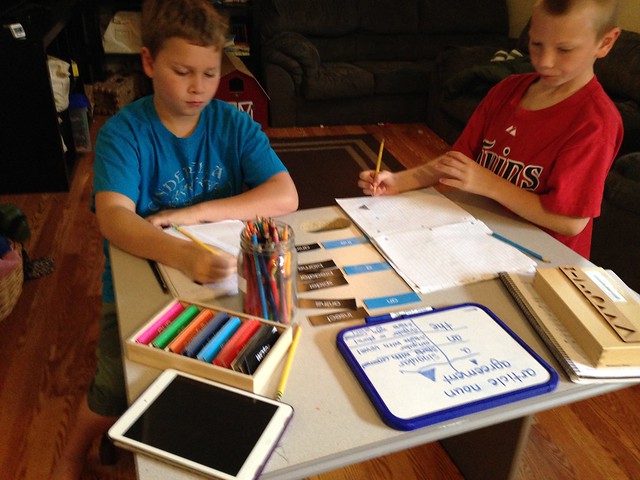Most homeschool families I know (including myself) start to think about next year’s curriculum in the spring. Conference and used curriculum sale season is upon us, we have a good sense of what we will finish this year, and we know what we loved/hated about last year’s choices.
I like to go into conferences and used book sales with a solid list of titles I want for the next year. I usually break the list down into must have/should have/would like to have because I always have more titles on my wish list than I can reasonably afford to order outright. As someone who mixes and matches curricula, publishing companies, and even learning styles I find that a solid outline for what I need to plan in the first place is an invaluable resource.
The following is an excerpt from my ebook, Beyond the Moveable Alphabet: Design Your Own Elementary Language Curriculum Using Montessori Principles, that might help you in making decisions and planning for next year.
(begin excerpt)
As a parent-teacher, educating my children at home, ultimately it is my decision (along with my husband’s) what to teach and how to teach it. Each state has varying requirements for their homeschooling families and each family must make their own best choices within that framework.
In terms of the reading and writing aspects of curriculum, there is a vast amount of information that can be taught. The full Montessori curriculum effectively teaches all of it, but that doesn’t mean we have to. Some families may choose to focus heavily on grammar from the start, while others wait a few years. Some families may choose to use a formal spelling plan, while others address spelling as the need arises. Some families may focus on oral composition and presentation, while others focus on written composition. All of these approaches are valid.
In a homeschool setting, we can apply the Montessori teaching philosophy and techniques at whatever age we desire to teach a specific skill. When discussing literacy, we are speaking of the ability to read, write, and speak clearly. A child needs to be able to communicate thoughts clearly and effectively. That is the over arching goal for each family and for each student: literacy. Once a child has learned to read, here are other topics that are generally included as components of literacy education:
- Reading Comprehension
- Vocabulary
- Spelling
- Writing Mechanics
- Grammar
- Written Composition
- Literary Appreciation/Genres
- Oral Speaking and Presentation
(end excerpt)
I create Amazon wish lists, bring the list with me to used curriculum sales, and watch for free shipping deals from publishing companies that carry a large selection of what I need. We have an Amazon Prime account now, but we haven’t always, and I found that when I created the wish list and clearly labeled it, if I was short of $25 for free Super Saver Shipping on something I needed I would find a book that was the correct amount to bump me over.
If you are interested in more language planning guidance, including detailed descriptions of each of the categories above and tons of sample lessons and activities, check out the rest of my ebook, available on TeachersPayTeachers. It’s in a PDF format so you can read it on literally anything!
Happy Spring Planning!


Recent Comments